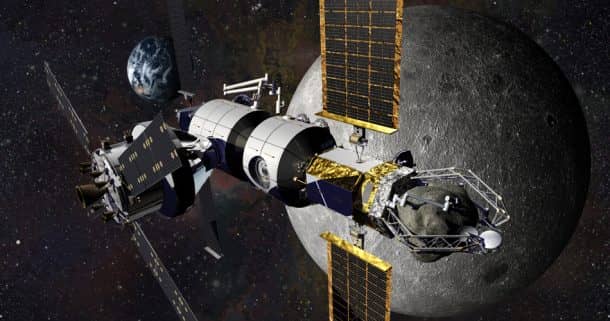We have made it to the moon and now, we frequently talk about the low earth orbit (LEO), launching satellites and sending missions to the International Space Station. The journey from the surface to LEO takes mere hours, but that is not where the humans plan to stay in the future. We are planning missions to Mars, or even establish human colonies there, and the one-way journey alone would take up to nine months. The spaceships carrying humans to LEO or the moon do not require to have sleeping facilities or bathrooms, so the Russian Soyuz, SpaceX’s Dragon, NASA’s Orion capsule are small and cramped. What next is the large enough space habitat!
NASA has now commissioned six companies to deal with the task of designing deep space habitats that are large enough to accommodate living for an extended period. One of the six companies is Lockheed Martin, who are developing the space habitat concept and the aerospace company just announced its plans for building the life-sized prototype of its Deep Space Gateway at the Kennedy Space Center in Florida.
The announced prototype is not meant to fly, but it will help to refine the design. Lockheed’s space habitat program manager, Bill Pratt says,
“Form, fit and function are key. So we will be exploring the critical elements needed in this section of a larger deep space gateway to ensure functionality for the astronauts.”

The Deep Space Gateway will be built by refurbishing an old cargo container named Donatello, previously used to carry supplies to ISS in the time of shuttles. Similar containers produced by the Italian Space Agency were named Leonardo and Raffaello. The metal can-like container measures 22 feet in length and 15 feet in diameter, and refurbishing it will take about 18 months time.
Pratt explains that,
“the main objective is to ensure astronauts can utilize the space efficiently in combination with other elements of a full architecture.”
The company will experiment with virtual and augmented reality to aid the design and construction of the space habitat, while keeping the costs low.
“For example, we are exploring how we can use AR to integrate exercise equipment for the astronauts—before allocating physical space for it in the habitat. We are also looking at modeling docking ports for other elements of the Deep Space Gateway, rather than cutting holes in the actual Donatello cargo container.”
The mixed reality platforms that they are exploring to use in the project include Microsoft Hololens and Meta.
All we can say about the Deep Space Gateway right now is that it will look something like a huge metal can, but it will be equipped with life support equipment, radiation protection, private spaces, and exercise areas for astronauts, just like the ISS.
“Because the Deep Space Gateway would be uninhabited for several months at a time, it has to be rugged, reliable, and have the robotic capabilities to operate autonomously. Essentially, it is a robotic spacecraft that is well-suited for humans when Orion is present,” elaborated Pratt.
Once Lockheed is done running the tests, it will hand over the prototype to NASA so they can perform their own analysis. The aerospace company is also planning an avionics laboratory that will demonstrate the interface of Deep Space Gateway with NASA’s Orion capsule. It may also train the astronauts for all the anticipated scenarios in space.
Source: Popular Science


